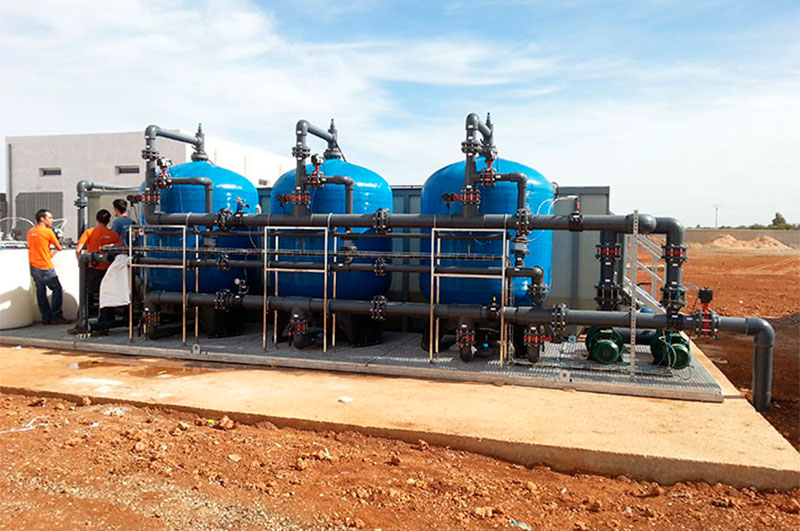Surface water treatment
Water from rivers or lakes / Canals is the most variable source of raw water and the most easily accessible.
The following characteristics may be highlighted:
- Moderately low salinity
- High bacteria content
- High turbidity, suspended solids, and colloidal matter content
- Important variability because of weather or seasonal variations
Treatment of surface water may consist of a sequence of different stages such as
- Coagulation and Flocculation
- Settling and Clarification
- MultiMedia Filtration/Pressurised sand Filtration
- Disinfection
Water Clarification with coagulation and flocculation in order to destabilize and precipitate colloids and solids into a gravity settler or lamella-pack clarifier, filtration on media filters in order to effectively remove the residual suspended solids. The efficiency of filtration can be enhanced by the use of chemical agents (coagulation agents or filter aids) that promote the solid particles to coalesce and further grow.
Granular Activated Carbon (GAC) adsorbers are effective in the removal of organics and could be moreover useful to perform the removal of excess free chlorine in case chlorination is done to achieve the disinfection of the feed water.
Microfiltration and Ultrafiltration may be valid alternatives to the Chemical physical unit because of the high potential of retaining suspended solids, bacteria, viruses, and high-molecular-weight hydrocarbons.
When the dissolved solids content is too high to enable any industrial or civil use, a desalination process could be implemented by means of reverse osmosis technology. This is a particular case of water taken from the river estuaries when it may be contaminated by seawater inflow during the dry season.



